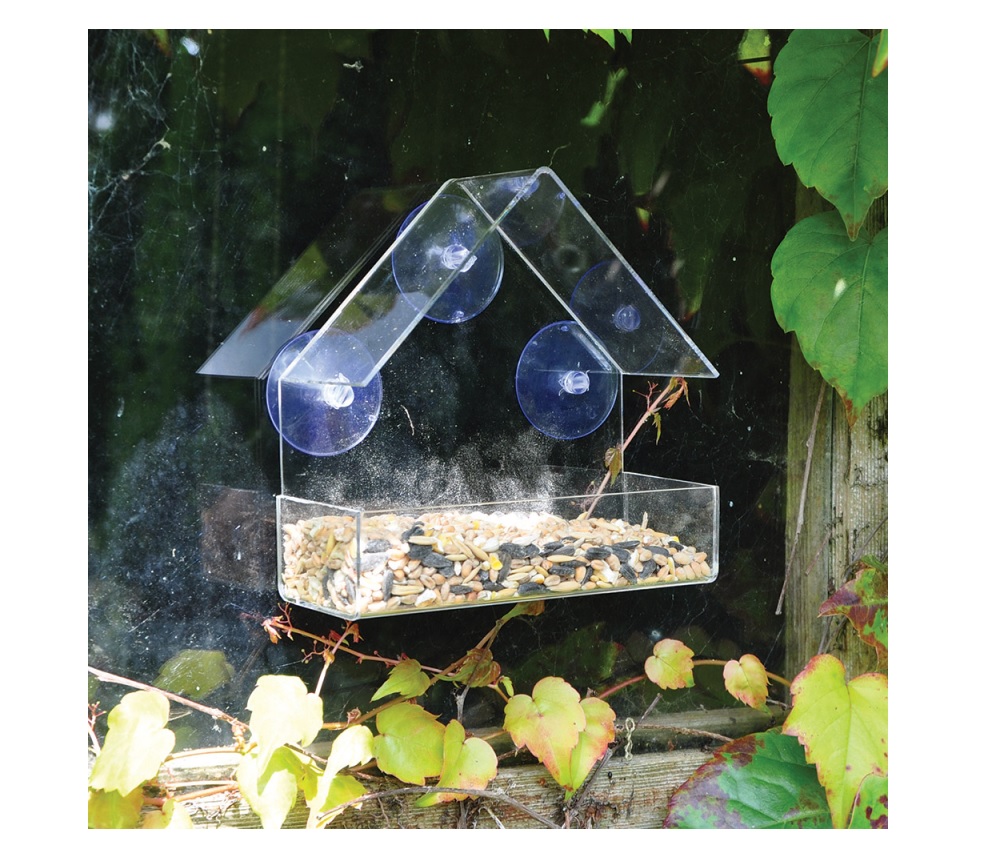

You will make one report for each two-day count.

(For example, if the first time you look at your feeder you see one Northern Cardinal and two Blue Jays, record these numbers next to their names.) Each time you see a species within your count site during your count days, count the number of individuals in view simultaneously and record that number on your tally sheet.Keep a tally sheet and field guide handy.
#WINDOW BIRD FEEDER CLEAR HOW TO#
Here’s how to conduct your two-day count: For Project FeederWatch you should count birds you see in your count site during the day that are attracted by something that you provide. To ensure that FeederWatch data can be used for scientific research, every FeederWatcher must count birds in the exact same way. You can also use the Cornell Lab’s Merlin app for help identifying birds.īack to top Count your birds How to count your birds For help with similar looking birds, such as finches, woodpeckers or accipiters, visit the Tricky Bird ID page. For more information about identifying birds, visit Identifying Birds in the Learn section of this web site. To identify a mystery bird, consult a current field guide, such as the Cornell Lab’s All About Birds online guide. If you see the bird during a FeederWatch count, include notes about when you saw the bird and how many you saw so that you can add the observation to your count if you are able to identify the species later. If you cannot identify a bird, sketch or photograph the mystery bird and pay attention to its field marks before consulting a field guide.

#WINDOW BIRD FEEDER CLEAR DOWNLOAD#
You can download a mini version of the poster for free.

We encourage you to acquaint yourself with the birds in your area by studying the Common Feeder Birds Poster included in your first research kit. Since relatively few species of birds visit most feeders, these species can become very familiar to you with a little practice and careful observation. Visit the Feeding Birds section for more information about how to create a count site that will be attractive to birds.Ĭorrectly identifying the birds at your feeder is critical to the quality of the data you submit and to the success of Project FeederWatch. Once you have chosen your site, count birds at this same site all season, if possible. Most count sites are roughly the size of two tennis courts, but can be as small as a single feeder. Choose obvious boundaries, such as the border of your yard or an area within a courtyard. We prefer that you select a count site that you can observe from one vantage point, but multiple vantage points are acceptable so long as you never add counts together (if you see a male cardinal out your front window and a female cardinal out your back window, you should only report one cardinal because that’s the most you saw from one vantage point at one time). Your count site should include feeders, a water feature, and/or plantings that you maintain for birds. Select an area as large as you can consistently observe from week to week. Your FeederWatch count site should be an area that is convenient to observe, such as a backyard outside a kitchen or dining room window. Use the FeederWatch app or a Tally Sheet.


 0 kommentar(er)
0 kommentar(er)
